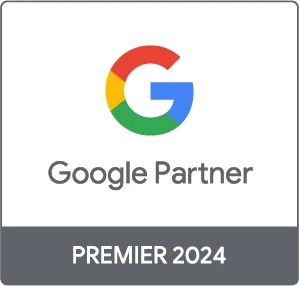Travel SEO Ranking Factors: How to skyrocket your SEO strategy
When it comes to Search Engine Optimization, there’s no single, works-for-all-clients-and-industries approach. Travel SEO is no exception to that rule.
Long gone are the days when you could visit your local travel agency to learn more about a travel destination you crave to visit.
As a matter of fact, most Post-Millenials (aka Generation Z), the world’s upcoming digital spenders, are not even aware of the existence of local travel agencies; And that’s an understatement.
Searchmetrics recently published an interesting infographic on the most important ranking factors in travel SEO, highlighting major factors, the differences compared to other industries, as well as the factors that can make you stand out in the market.
Ready to dive deeper?
What is different in Travel SEO
So… what makes travel SEO stand out and require “special attention”?
First of all, the travel and tourism industry is a profitable, $2.3 TRILLION (yes, trillion) Market. In this Online Travel Industry, one may find Enterprise online travel agencies, well-renowned price comparison websites, travel transport companies and even travel inspiration platforms that attract millions of visitors monthly.
How do you stand out in such a cluttered market without spending a fortune on advertising?
It may sound like Online Travel Agents monopolise the industry. Yet, according to a recent research by Phocuswright, the combined Market Share of OTAs will be no more than 41% by 2020, leaving plenty of space for other industry players to stand out and claim part of the market share. All it takes is tailor-made SEO strategy that will allow a website to stand out in the top search results of search engines – like Google and Bing for travel queries.
And — to be honest — when your offerings and content is relevant to a user’s intent & needs, is there a better way to nurture brand exposure and — ultimately — drive more sales?
The Top 4 Ranking Factors for Travel SEO
Sure, matching a user’s intent by focusing on all major travel-related keywords is a way to start a travel SEO strategy. But how useful will your content be, if no one can reach it or come across it while searching online?
When it comes to the most important factors that affect Search Engine Optimization in the travel industry, there’s a major difference compared to the broadly-applicable SEO ranking factors.
Whereas a technically-sound, easily-indexable website remains a top priority, other factors are of equal importance.
#1: Bullets-per-List (max.)
One of the most interesting ranking factors is the Bullets per List. Excluding position 1, the top 10 results in travel-related queries contain – on average – nearly four more bullet points in their landing pages, compared to the benchmark.
It is surprising, isn’t it? But then again…
It’s what a user expects to come across, when visiting a travel website. Clear, detailed and ordered information that allow for easy navigation and “consumption”. From a destination page to a hotel reservation or attraction comparison, you wish for content that can help you in your purchase decision.
You may have the most interesting, appealing content in your top destination landing pages. You may offer the most useful information to every user that craves for it. But your content is formatted in one, enormously boring paragraph, without clear ordering or segmentation whatsoever.
It’s easy to understand that… it’s time for a change!
#2: Word Count
Word count is one of those ranking factors that play an even bigger role in the travel industry – compared t0 the general average. Travel websites that rank in the top 10 results for related terms have more than 2500 words in the landing page’s body!
Top-ranking pages in the travel industry have 57% more words than the general average measured across all industries.
Which leads to a quite clear conclusion…
Words matter. Keep your content clear, comprehensive and relevant. As long as your content relates to the user’s search intents and offers a satisfactory answer to their question, it’s a lot more likely to be marked as relevant – and rank higher in Search.
#3: Images
It seems that most travel-related websites in the top search results tend to use a larger number of images in their content. This comes as no surprise really.
Who wouldn’t want to come across some mesmerising portraits of their next Christmas destination? Or check out the view from the hotel they’re about to book in Barcelona? Guess that’s what everyone is expecting upon landing on a travel website, right?
Don’t be confused, though.
Simply adding a few extra random images here and there in every landing page of your car rental website won’t get your revenue stream flowing like the Niagara Falls.
Images are the ideal medium to enhance text content and User Experience. Do not hesitate using a good image that would increase the overall content relevance. After all, file size is not that important in the travel industry (Spoiler Alert!)
#4: Internal Links
Well, internal linking is one of the most important ranking factors, right?
A clear internal linking structure, proper content silos that would allow SEO juice to flow naturally and help users navigate seamlessly is what every travel website should aim for.
This is especially crucial for large websites with hundreds of thousands — or even millions — of webpages. That’s when internal linking proves it’s more important than ever. That’s also the reason that most travel pages on Google’s first page use more than 150 internal links in their landing pages – 23% higher than the general average.
Can you recall the last time you were searching for a travel destination and you weren’t sure if that’s the best place to visit. What did you do?
Probably you conducted a new Google search for a different destination.
Wouldn’t it be awesome if you could just click on one link from the page you’re already browsing to find another destination?
You’d more likely stay on the website a bit longer and compare a few destinations you came across that are really worth paying a visit, too.
Wouldn’t that give your travel website a competitive edge?
Now you get where this is going…
Internal linking and proper link structure isn’t just for the search bots (although it plays a major role for them, too). An appealing linking structure offers users the opportunity to navigate, search and even compare different destinations (or prices, attractions, hotel rooms – you name it), all in one website — your website.
An engaged user that has satisfied their needs on such a website is a lot more likely to “trust” this particular website when the time for the booking comes – when they are in the last step of the customer funnel. A funnel that has been partly nurtured thanks to the well-structured, logical, internal linking of the content on the website.
The “Ever-greens” of Search Engine Optimization
Sure, the travel SEO ranking factors do have some differences compared to general benchmarks. The importance of particular ranking factors, however, remains unchanged, regardless of industry.
#1 Headings
No matter how “rich” of content your landing page, if there is no clear content structure, what you’re trying probably won’t work. And what’s a better indication of content structure than a Heading 1? A clear, visible heading that describes the webpage’s content is useful both for the end user as well as the search engines that have to index, categorise and rank the content based on its relevance to the search query.
#2 Number of Backlinks
Another “technical” factor that remains of importance – no matter the industry – is the number of backlinks a domain and a page gets. Backlinks indicate authority and trustworthiness — a couple major characteristics that Google takes into account.
#3 User Behaviour Metrics
User Behavior metrics are crucial ranking factors.
Metrics like Click-through Rate, Time on Site and Bounce Rate can really indicate, both to the webmasters as well as the search engines, how engaging & attractive a webpage’s content is (or isn’t) for users.
After all, Google (and other search engines) work tirelessly to offer the most relevant, trustworthy result that matches a user’s search intent. That’s the one and only product a search engine offers; useful, relevant information that give a solution to users’ needs.
“Fun Facts” adding value in Travel SEO
And then comes the time when you’ve meticulously designed your SEO strategy, you’ve done the traditional “wax on, wax off” work, passed through some hard potential roadblocks and need to set yourself apart.
What’s the next step?
Though not directly affecting travel SEO, there are some really interesting “fun facts” — worth investing in — that can offer added value to your brand.
#1: Avoid AdSense
Even though Adlinks is not a ranking factor, Google has really pushed towards user-friendly landing pages in the last few years. That being said, consider setting usability and content “consumption” in a higher priority, as it could potentially translate into a Google rankings drop.
If AdSense is a must-have for your business, try finding a workaround. Consider placing additional offers and ads later in the booking process, keeping your organic search landing pages ad-free.
#2: Don’t sweat File Size
In the last couple of years Google pushes towards a new era of fast-loading, lightweight websites that offer a better User Experience even in the worst of network connections. That’s why so many companies and agencies work on minimizing their website’s (and their client’s website) File Size. It doesn’t seem to be the case in the travel industry, though.
Websites ranking in the top 10 SERP in the travel industry are — on average — 40% larger than the overall benchmark.
After all, it takes more than a couple hundreds of words and 3 images to provide micro-moment-targeted content that matches and satisfies the user’s intent.
#3: HTTPS is a plus (and a must)
Long gone are the days that HTTPS was a privilege of a few, as 45% of the total websites ranking in the top 10 use encrypted data transfer.
However, when it comes to the travel industry, only 21% of the top 10 ranking websites use an HTTPS connection.
And that’s quite an opportunity for Travel SEO.
Google in the last few years favors encrypted websites. Providing all your website’s URLs over a secure connection (not just the booking process pages) can offer a significant advantage over the unencrypted websites of your competitors.
#4: Load time is essential
When it comes to average load time, the travel industry’s top competitors have a load time that exceeds 10 seconds – more than 3 seconds slower compared to the general benchmarks.
Simply put, don’t even think about sacrificing your content quality for the sake of an improved load time.
Rather than looking for a workaround to shorter URLs, optimise, enrich and adjust your content to match your visitors’ needs.
#5: Social Channels; Your ideal content distributors
There’s a really fun norm taking place in the travel industry, when it comes to the use of social channels.
They’re the very last option for digital content distribution!
Top movers in the travel sector only generate a tenth (yes, that’s 10%) of social signals count, compared to the general benchmark of other industries, like eCommerce or Media. Then again, one may ask…
How does Social Media Marketing affect organic search rankings?
Sure, there’s no direct indication that posting your content and advertising in social media can improve your rankings. However, through social media, one may drive traffic and raise their content exposure to a much bigger audience.
Now imagine sharing a blog post about “the best places to visit in Europe on a budget”; Thousands of users looking for their new vacation destination are going to pay a visit to your blog and — guess what — READ. IT. TOP TO BOTTOM.
If that’s not the best way to nurture and gain User Behaviour signals (an evergreen SEO ranking factor, remember?), then what is?
And that’s where a successful social strategy comes in handy. In fact, it becomes a necessity, if you don’t want to be the one that just boasts about a few blog posts ranking in the first page of the SERPs.
It can make you stand out from your competition in a social-media-driven era and beyond. The right digital marketing agency could help you achieve your goals.
Ready for take-off? Not so fast…
Working towards improving the most important ranking factors of the industry, as well as some universally decisive factors is the way to go.
But what if going step-by-step, one problem at a time doesn’t do the work?
What if something doesn’t go according to plan?
Trying to achieve performance in such a cluttered sector requires a diligently organised approach. One that will allow you to prioritize those optimization actions that will offer the biggest return.
Otherwise, it’s just a “Do-all, hope-for-best” mindset, the success of which is strongly doubted, historically.
Sounds like you’ve understood what it takes to reach the top?
Let’s talk.












Great post. Thanks for providing a detailed article.
I appreciate the kind words you wrote and I’m glad that you found some information that can help you with your site.